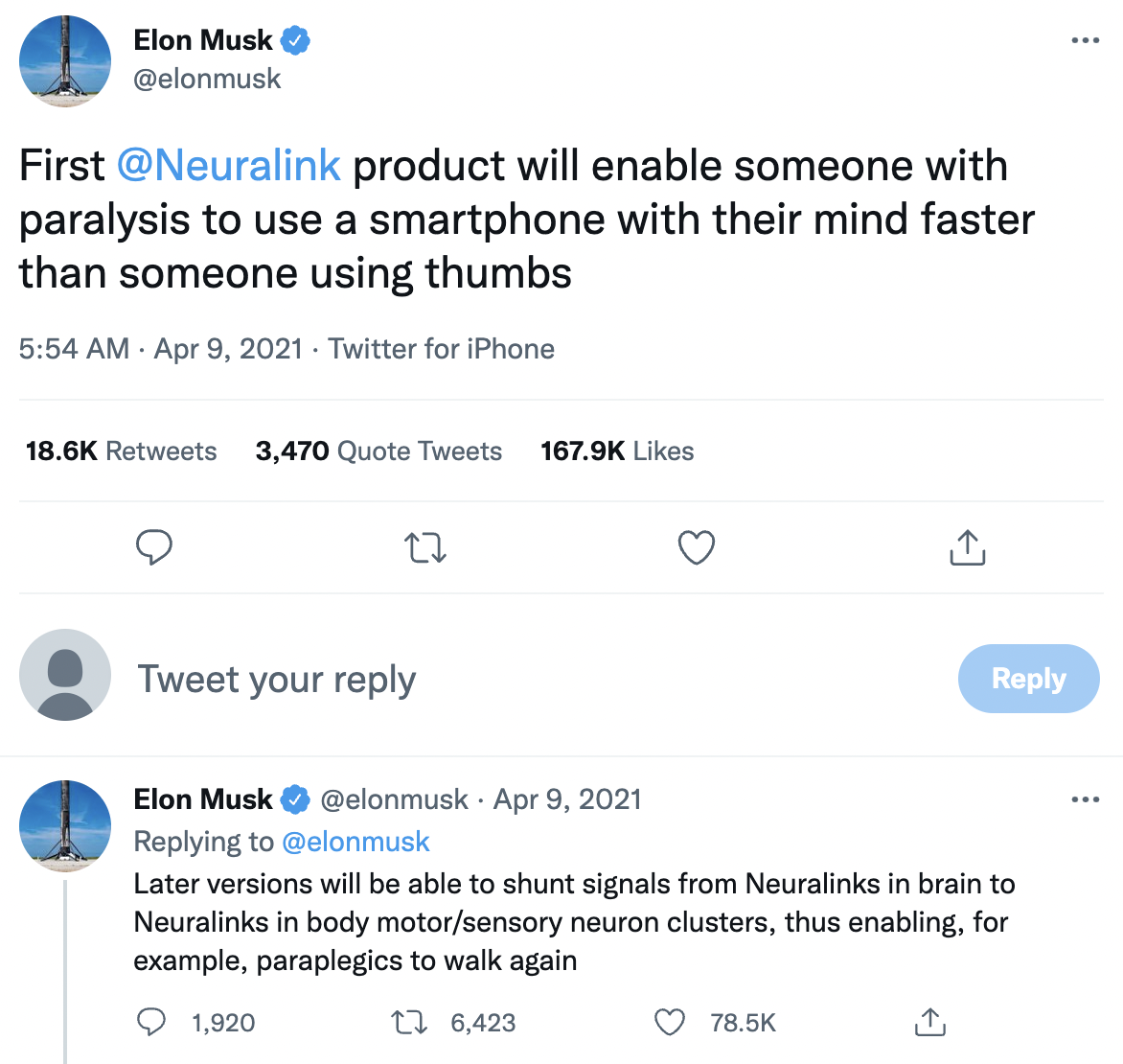|
Listen to this story
|
A report by Bloomberg states that last week, an Australian brain-computer interface startup called ‘Synchron’ implanted its first device into the brain of a US patient. The patient was suffering from ALS, a neurodegenerative disease that affected their ability to speak and move, and was from Mount Sinai West medical centre in New York. The chip would help immobile patients send emails and text messages using their thoughts.
Synchron had previously tried and successfully tested this procedure on four patients in Australia who were then able to send WhatsApp messages and even shop online. While ‘Synchron’ may be relatively unheard of in the flashy brain-computer interface or BCI segment, it received approval from the US Food and Drug Administration (FDA) to begin human trials in July 2021. Surprisingly, the perceived lodestar of the brain-computer interface, ‘Neuralink’, is yet to receive FDA approval to implant their technology in humans.
Formidable competitors
In contrast, Synchron had implanted its first chip in a human patient way back in 2019 in Melbourne, Australia. Musk’s prediction that his company would start human trials in 2020 is yet to be realised. A fresh spate of incidents also showed that the dark cloud around Neuralink is only growing larger with passing time.
Departure of senior executives
A day after Synchron’s success story broke, ‘Neuralink’ co-founder Paul Merolla announced his departure from Musk’s company. Reuters reported that Merolla was the sixth founding member among the original eight to quit—leaving Musk and Director of Engineering Dongjin Seo. Merolla revealed that he was departing from Neuralink in pursuit of a new confidential project. In 2021, Neuralink’s former president Max Hodak resigned from his role at the company, only to invest in ‘Synchron’ a few months later.
In July 2022, an Insider report stated that Musk had fathered twins with Neuralink executive Shivon Zilis who had been working with the company since 2017. Zilis currently serves as the company’s director of operations and special projects. Musk confirmed the report, tweeting in response—“doing my best to help the underpopulation crisis.”
Tall claims
The long line of senior executives departing from Neuralink could be a sign that the company may be overshooting its ambitions. In comparison, Synchron’s science was deemed much simpler. Its device had a stentrode which could be inserted into a patient’s brain through a minor incision. The usage of a stentrode prevents any major surgery on the patient and does not cause long-term inflammation or trauma. The doctor typically uses a catheter to place the stentrode device within a blood vessel inside the motor cortex, responsible for control and voluntary action.

Once the stentrode is safely planted in the patient’s neck, it is connected to a computing device that is placed within their chest. The stentrode is then able to record the signals produced by the neurons and send these signals to the computing device. The computing device then transfers this information to a phone or a computer via bluetooth.
In contrast, Neuralink proposes a more roundabout way to fulfil its promise. The company intends to develop a surgical robot that would implant the device within a patient’s brain. The device Neuralink promises is expected to be more compact and potent than Synchron’s device and would likely require the removal of a part of the patient’s brain for successful insertion. The surgical procedure would be done using the robot.

Unclear intent
Elon Musk’s past claims about Neuralink’s potential have contributed to the lack of clarity about its intent. While marketing Neuralink, Musk initially said that he wanted the chip to be a ‘Fitbit in the brain.’ In 2020, he stated that Neuralink’s chips would have the ability to perform telepathy, in the sense of summoning one’s car using the mind or even ‘save and replay’ memories. Neuroscientists and other experts in the field, however, have noted that the underlying science behind the company’s fanciful ambitions is shaky.
In November 2019, Musk also claimed that Neuralink would be able to ‘cure a lot of brain-related diseases’ like autism and schizophrenia. In another instance, he claimed that the device would be able to cure blindness, paralysis, deafness and even insomnia. Since the company’s inception in 2016, no documented proof has been revealed to substantiate these hefty claims.
According to Elon Musk, Neuralink’s chip could help ‘achieve symbiosis between humans and AI’. While fascinating, neuroscientists have emphatically spoken against the idea that a healthy human being be advised to undergo brain surgery. The practice of inserting devices in patients is exclusively reserved for patients in dire need of life-saving surgery.
It is plausible that a lot of Musk’s excitement may be from experiments that wouldn’t be considered groundbreaking in themselves. Since 2019, he has repeatedly praised the company’s achievement in implanting the Neuralink chip in a monkey’s brain successfully. In April 2021, Neuralink claimed that their research monkeys were able to play a computer game called ‘Pong’ using their minds and released a video as evidence. However, experts have expressed no awe or shock in response to the results, noting that this is an experiment that has been conducted previously. Additionally, for a company that wants to move towards BCI, testing on animals would be a part of the natural sequence of events.
Allegations of animal cruelty
In Neuralink’s already turbulent journey, allegations of animal cruelty were also made around the use of macaque monkeys as research subjects at the University of California, Davis Prime Center.
A non-profit organisation called the ‘Physicians Committee for Responsible Medicine’ wrote a letter to the US Department of Agriculture (USDA) requesting an investigation into Neuralink’s practices. In the results of their investigation, it was revealed that it had found a ‘pattern of extreme suffering and staff negligence’ from the records on the 23 research subject monkeys at Neuralink. The committee further elaborated that Neuralink’s staff had ‘removed portions of the monkeys’ and ended up killing several of them.
Neuralink eventually responded to the report admitting that several monkeys in the course of their research but denied any alleged claims of animal cruelty against them.

























